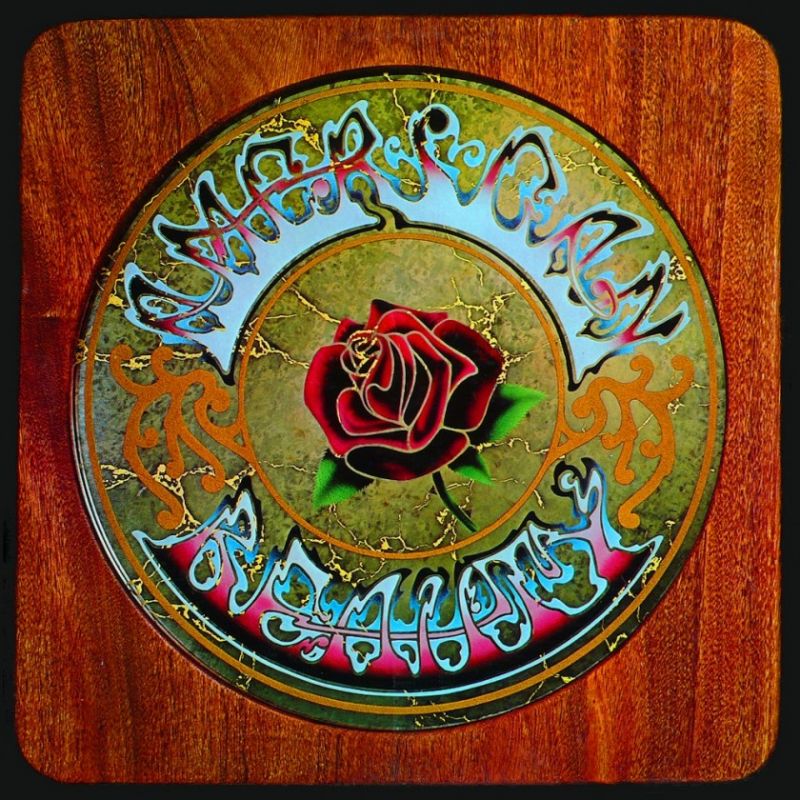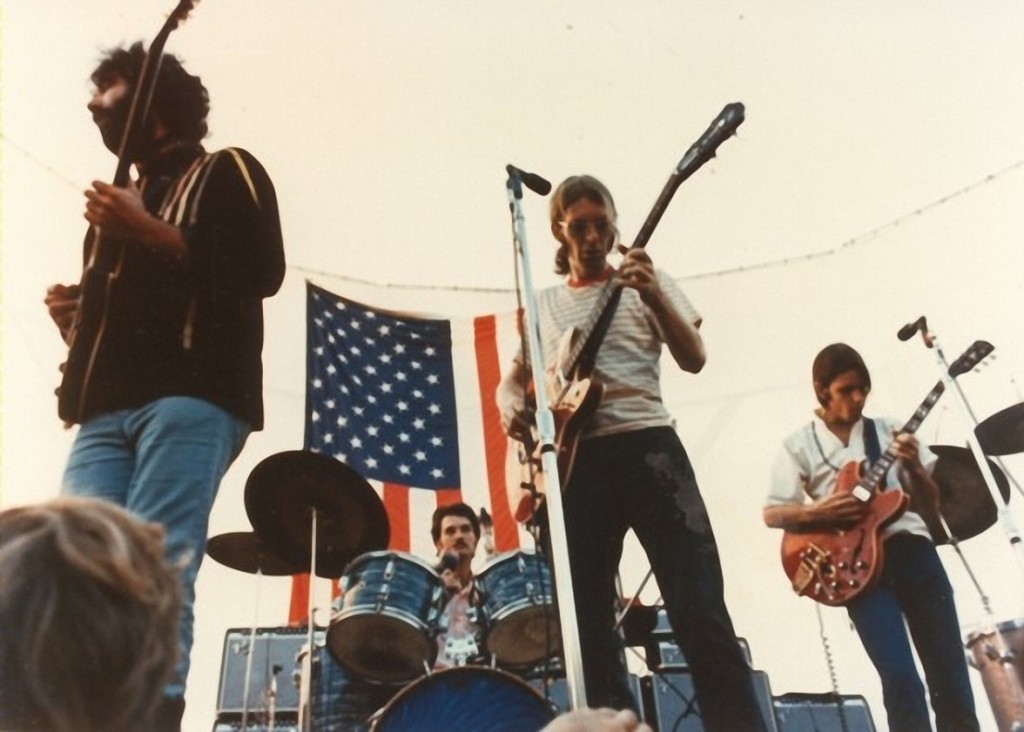
“Taking notes on vocal harmonies from friends Crosby, Stills, Nash & Young, the Dead used the softer statements of their fourth studio album as a subtle but moving reflection on the turmoil, heaviness, and hope America’s youth was facing as the idealistic ’60s ended. American Beauty was recorded just a few months after its predecessor, both expanding and improving on the bluegrass, folk, and psychedelic country explorations of Workingman’s Dead with some of the band’s most brilliant compositions.”
– Fred Thomas (Allmusic)
It took me a while to get into Grateful Dead, but when they hit me, they hit me hard! This is my second favorite of their albums (my number one is Workingman’s Dead) I should say studio albums, because I really love their early 70s live stuff.
American Beauty is the sixth album by the rock band the Grateful Dead. It was recorded between August and September 1970 and originally released in November 1970 by Warner Bros. Records. The album continued the folk rock and country music explored on Workingman’s Dead and prominently features the lyrics of Robert Hunter.

In 2003, the album was ranked number 258 on Rolling Stone magazine’s list of the 500 greatest albums of all time.
Phil Lesh and Bob Weir discuss the classic American Beauty album:
The band began recording American Beauty only a few months after the release of Workingman’s Dead, and without their regular sound crew, which was out on the road as part of the Medicine Ball Caravan tour (which the Dead were originally scheduled to join), and this led to staff engineer Stephen Barncard replacing Bob Matthews as producer—”a move that irks Matthews to this day.” Barncard mused that “I had heard bad stories about engineers’ interactions with the Dead but what I found were a bunch of hardworking guys.”
Grateful Dead – Box of Rain (09/24/88 – Madison Square Garden):
Both Workingman’s Dead and American Beauty were innovative at the time for their fusion of bluegrass, rock and roll, folk and, especially, country music. Compared to Workingman’s Dead, American Beauty had even less lead guitar work from Jerry Garcia, who instead filled the void with pedal steel guitar passages on both albums. It was during the recording of this album that Garcia first collaborated with mandolinist David Grisman. “I just bumped into Jerry at a baseball game in Fairfax, and he said, ‘Hey, you wanna play on this record we’re doing?'” commented Grisman. Phil Lesh, in his autobiography, commented “the magnetism of the scene atWally Heider’s recording studio made it a lot easier for me to deal with Dad’s loss and my new responsibilities. Some of the best musicians around were hanging there during that period; with Paul Kantner and Grace Slick from Jefferson Airplane, the Dead, Santana, Crosby, Nash, and Neil Young working there, the studio becamejammer heaven. Thank the Lord for music; it’s a healing force beyond words to describe.”
Grateful Dead – Friend Of The Devil (12/31/78 – Winterland):
“Truckin'” and “Ripple” were released as singles, and the songs “Box of Rain”, “Sugar Magnolia”, and “Friend of the Devil” also received radio play. In his book on Garcia, Blair Jackson noted that “if you liked rock’n’roll in 1970 but didn’t like the Dead, you were out of luck, because they were inescapable that summer and fall.”American Beauty peaked at No. 30 on Billboard’s Pop Albums chart (North America), while the single, “Truckin'”, peaked at No. 64 on the Pop Singles chart and achieved considerable FM rock radio airplay. It was the final album with Mickey Hart until his return to the band four years later in 1975.
Grateful Dead – Ripple (10/31/80 – Radio City Music Hall):
– Hallgeir
